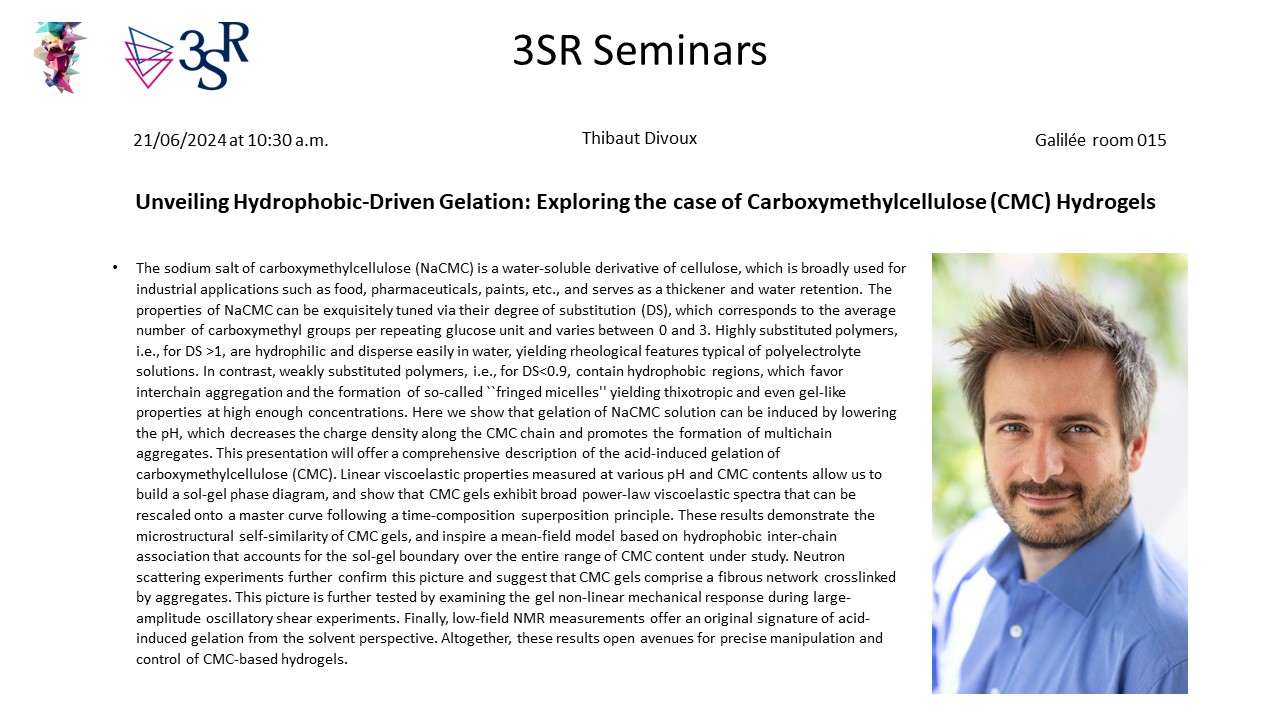- Share
- Share on Facebook
- Share on X
- Share on LinkedIn
Séminaire
From June 10, 2024 to June 14, 2024
Saint-Martin-d'Hères - Domaine universitaire

Unveiling Hydrophobic-Driven Gelation: Exploring the case of Carboxymethylcellulose (CMC) Hydrogels.
The sodium salt of carboxymethylcellulose (NaCMC) is a water-soluble derivative of cellulose, which is broadly used for industrial applications such as food, pharmaceuticals, paints, etc., and serves as a thickener and water retention. The properties of NaCMC can be exquisitely tuned via their degree of substitution (DS), which corresponds to the average number of carboxymethyl groups per repeating glucose unit and varies between 0 and 3. Highly substituted polymers, i.e., for DS >1, are hydrophilic and disperse easily in water, yielding rheological features typical of polyelectrolyte solutions. In contrast, weakly substituted polymers, i.e., for DS<0.9, contain hydrophobic regions, which favor interchain aggregation and the formation of so-called ``fringed micelles'' yielding thixotropic and even gel-like properties at high enough concentrations. Here we show that gelation of NaCMC solution can be induced by lowering the pH, which decreases the charge density along the CMC chain and promotes the formation of multichain aggregates.
Date
10:30 am
Localisation
Saint-Martin-d'Hères - Domaine universitaire
Bâtiment Galilée 015
- Share
- Share on Facebook
- Share on X
- Share on LinkedIn
